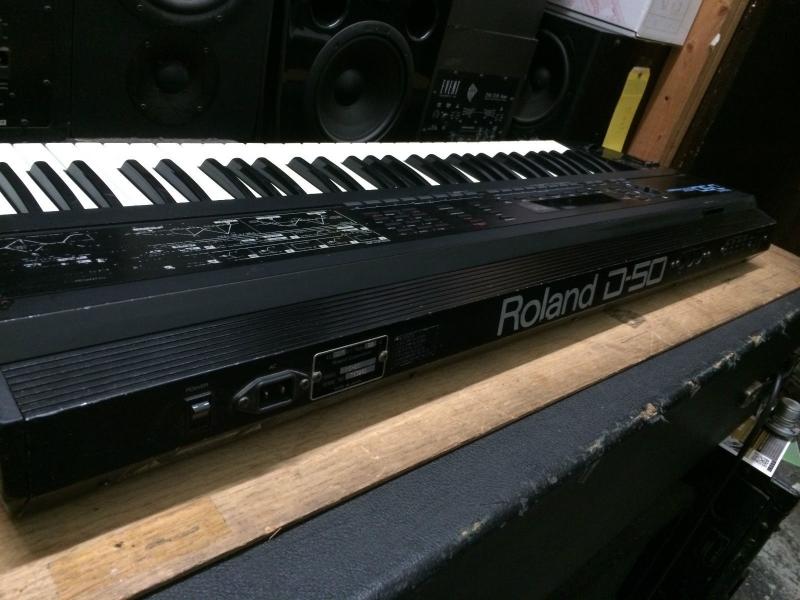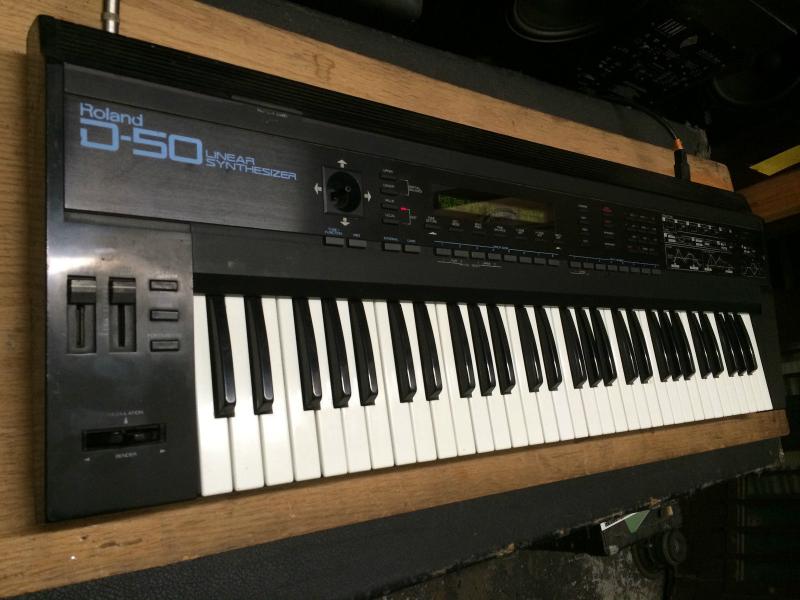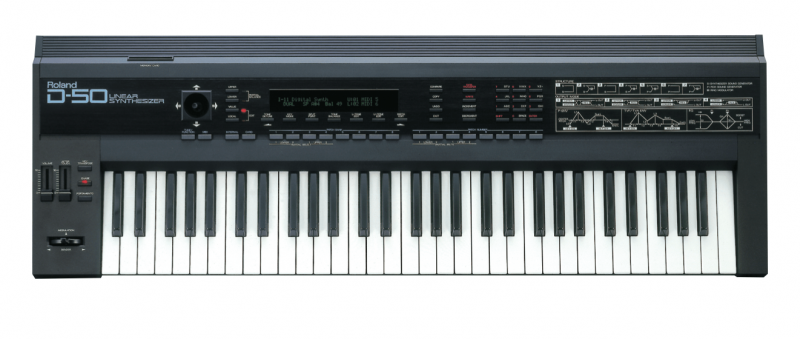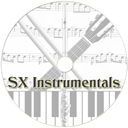Filter on ALL, SYNTH, DRUM, SAMPLER or MISC |
Total list currently 2405 items in 330 Brands |
Roland | D-50 |
Description | The D-50 is an all-time favorite digital synth that's still just as popular today as when it first came out in '87. Once Roland's hottest digital synth, it competed against the Yamaha DX7, and was much easier to use. By joining 8-bit PCM samples with "LAS" synth-generated sounds, the D-50 is capable of unique and complex sounds. The PCM samples contained the attack transients, while the rest of the sound came from the Linear Arithmatic Synth (LAS) section which sounds very analog, with subtractive-style synthesis and low-pass-resonant filters. Built-in chorus and (for the first time) digital reverb are also included for giving your sounds space and life! It also has a joystick controller for real-time timbre manipulation. The D-50 was great for new and non-acoustic, percussive, ethereal and beautiful pads & sounds. Both the D-50 and D-550 (Rack version) benefit from the PG-1000 external controller which gives you very plain and simple slider/fader type control of all adjustable parameters of the synth. The D-50 includes MIDI on all 16 channels but because it is monotimbral you can only use one channel at a time. There is an upgrade which will give the D-50 and its rackmount version a full 16 channels of simultaneous MIDI multitimbral data communication. This popular synth has been widely used in all forms of music. Musitronics in Germany made an expansion kit. The M.EX (pronounced 'em-ex' ) board will change the way you make music with the Roland D-50 or D-550 LA-synthesizer. With a simple installation of the M.EX board, your D-50 becomes multi-timbral, giving you the power to play up to eight tones or four patches at one time. Plus, the M.EX board triples the D-50's memory to store 192 sounds. The M.EX board adds 10 new displays and 42 new parameters, providing enhanced capabilities for playing live or for use in a sequencer-driven enviroment. All voice-allocation is done dynamically. You can create and save seperate Multi-Mode settings for every patch, giving you instant access to up to 192 Multi-Mode settings. New functions and parameters for the D-50 provided by the M.EX board:
|
| Brand | Roland |
| Model | D-50 |
| Device | Synth |
| Type | Keys |
| Engine Type | Digital |
| Engine | PCM, LA |
| Voices (max) | 16 |
| Multitimbral | 1 |
| Oscillators | 4 |
| LFO | YES (3 x 2tones = 6 LFOs) |
| Engine Detailed | Digital LAS (Linear Arithmetic Synthesis) & PCM, 32 osc. |
| Filter (VCF) | low-pass-resonant |
| Envelope (VCA) | ADSR |
| FX | 8 Effects |
| Memory | 64 patches |
| Drums | Drums: 1 kit, 63 sounds, 22 user sounds |
| Keys | 61 |
| Key type | Keys |
| Velocity | Y |
| Aftertouch | Channel |
| Midi | I-O-T |
| Extra info | Programmable via PG-1000 |
| Produced: | 1987 - 1989 |
| Legend: | Obvious | Y: Yes, N: No, N/A: Not Applicable | |
| VCO | Voltage Controlled Oscillator | DCO | Digital Controlled Oscillator |
| LFO | Low Frequency Oscillator | Sub | Sub Oscillator |
| VCF | Voltage Controlled Filter | VCA | Voltage Controlled Amplifier |
| Velocity | As with a piano, the harder you hit a key, the louder the sound, unlike most organs which always produce the same loudness no matter how hard you hit a key. | Aftertouch | Pressing a key after you activated it. Channel Aftertouch, no matter which key, it will send a Channel message. Poly Aftertouch, sends the pressure per key instead of the whole channel. |
| Values for OSC, LFO, Filter, Envelope are per voice unless stated otherwise. | |||





